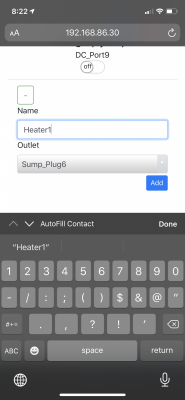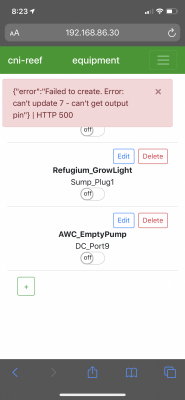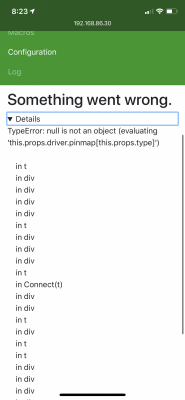How do I setup Automatic Water Changes to use ATO Sensors?
I have 2 Optical Sensors, one as high water level, and one as low water level. (The low water level sensor is only used for water changes).
I have 2 pumps, one drain pump, and one fill pump. (Both are listed under the "Equipment Tab")
I want to trigger the water change from a "timer", and I want the process to be as follows:
1. Turn on the "Drain Pump" to drain the water until water level triggers the "low water level" sensor.
2. Then turn on the "Fill Pump" until the water level triggers the "high water level" sensor.
How do I go about doing this?
Here's an example I was shown from @Des Westcott, he's the macro specialist and teaching me.
I'll try and explain as I understand it. This example uses a low/high level sensor to control separate pumps just like you're after. It also has an ATO sensor that gets disabled but you can ignore that.
I assume you setup your two sensors in the ATO tab, in this example that is 'AWC Out' (low level) and 'AWC in' (high level). When you setup these 'ATO' sensors have the low level set to control the drain pump and the high level should control the fill pump.
Sounds like you have your pumps setup correctly.
Now you need to create a 'Macro' to control everything. You might want to create two, call one 'Manual AWC' and the other 'Auto AWC'. There's a slight "glitch" with macros, if you want to use a timer to trigger the macro you need to setup the 'Steps' in reverse and set the 'Reversible' drop down box to 'Yes'. This is why you need 2 macros so you can better test it and run the AWC manually.
Let's go through each 'Steps' in the macro.
- The first step is optional and sounds like it doesn't apply to you but if you did have an ATO sensor you would first need to disable this sensor while the AWC runs.
- Now you want to enable the low level sensor (AWC Out) which will be sensing water. As soon as you 'Turn On' this sensor the pump it's controlling should turn on and water will start draining. If your sensor turns the pump on when no water is sensed, aka backwards, you need to go to the sensors 'Connector' and change the 'Reverse' option.
- Now you add a 'Wait' period to your macro, this is the longest you want you drain pump to run and should turn off your pump even if the lower sensor fails. The idea is the macro allows the drain system to run for a maximum of 300 seconds or whatever you choose. The next step won't run until this 'Wait' period expires.
- Now you 'Turn Off' the AWC Out sensor as it's no longer needed as your water has been drained. You could insert an extra step after this to turn off the actual drain pump, basically a make sure its off kind of thing.
- Now you 'Turn On' the AWC In sensor which is the high level sensor. Once this turns on it will startup the refill pump as it's not sensing any water. If your sensor turns the pump on when water is sensed, aka backwards, you need to go to the sensors 'Connector' and change the 'Reverse' option.
- Now you add another 'Wait' period, again this is the maximum you want the refill pump to run and should be set longer than it typically takes to refill your tank as you want the sensor to turn the pump off but obviously not long enough to cause a flood if the high level sensor failed. The next step won't run until this 'Wait' period expires.
- Now you can add a 'Step' to 'Turn Off' the high level sensor as the water change is complete. You could insert an extra step after this step to turn off the actual refill pump, basically a make sure its off kind of thing.
- And finally if you do have an ATO sensor setup as well you can turn this back on so your ATO will run as normal again.
Hope this helps, you might have to read it a few times as I typically need to rewrite things about 3 times before others can understand my gibberish.
The important thing to remember is the above represents running the macro manually. To run this macro via a timer you need to create the 'Steps' in reverse and set 'Reversible' to 'Yes', don't forget this or you will be chasing your tail.
























